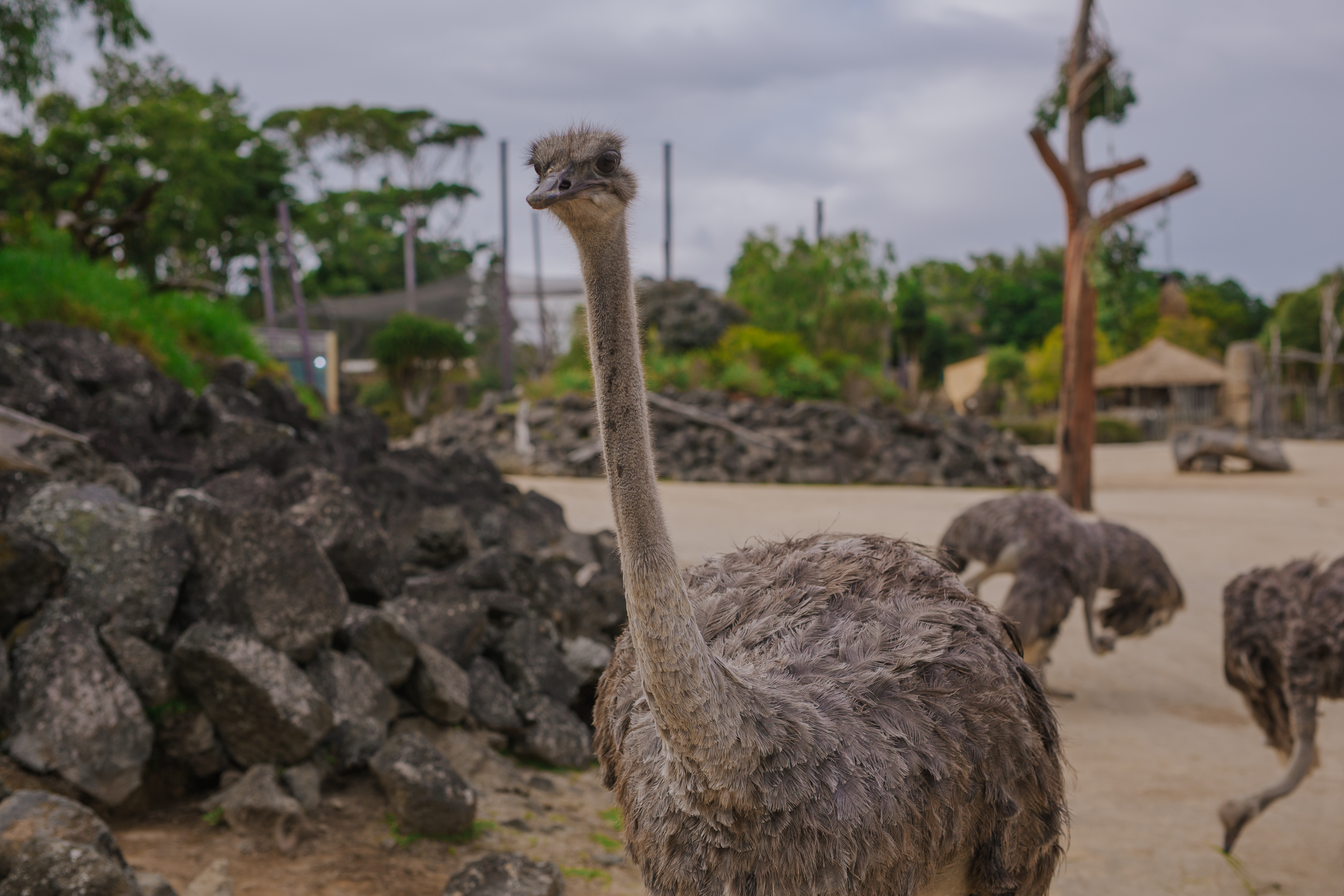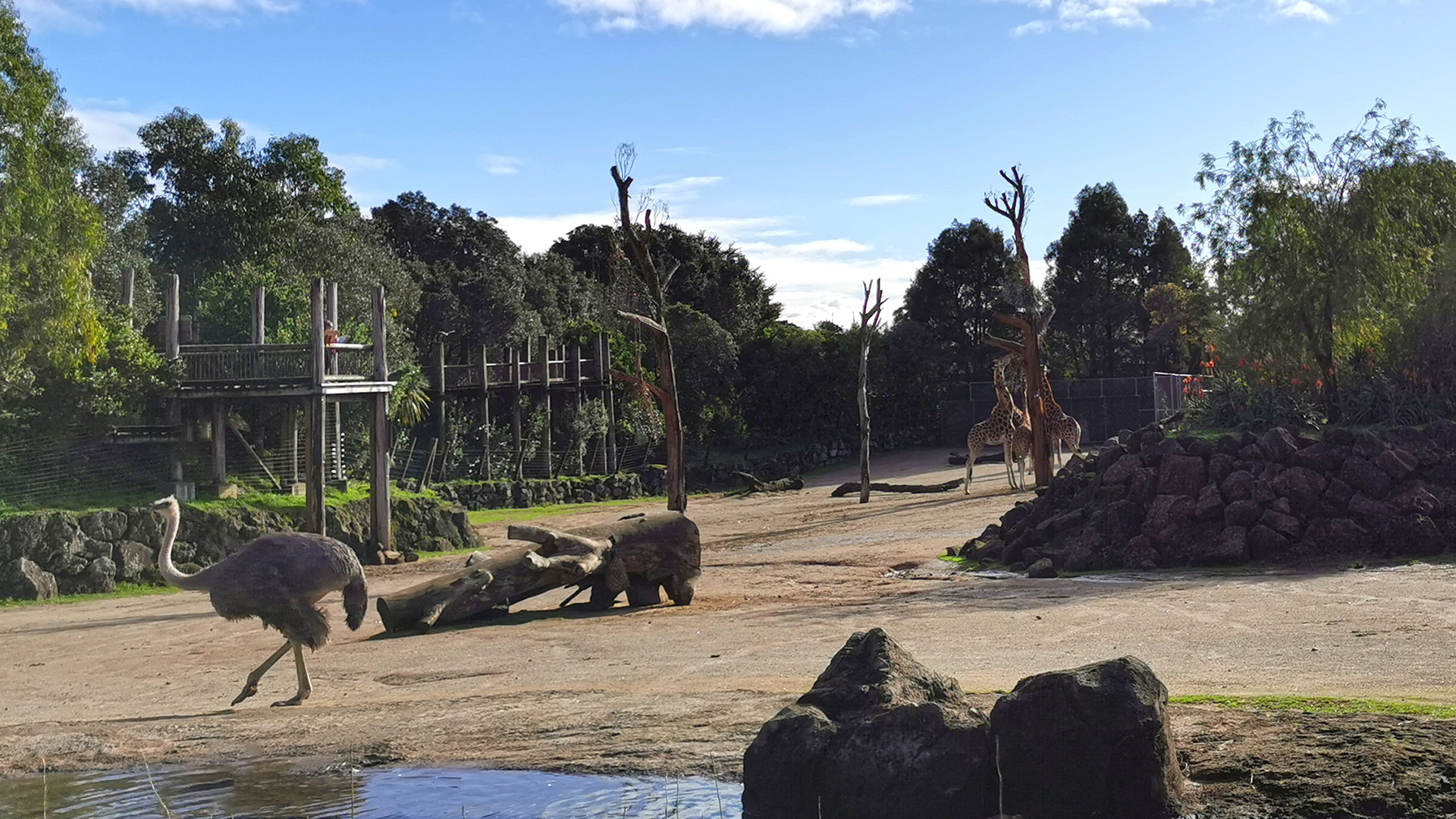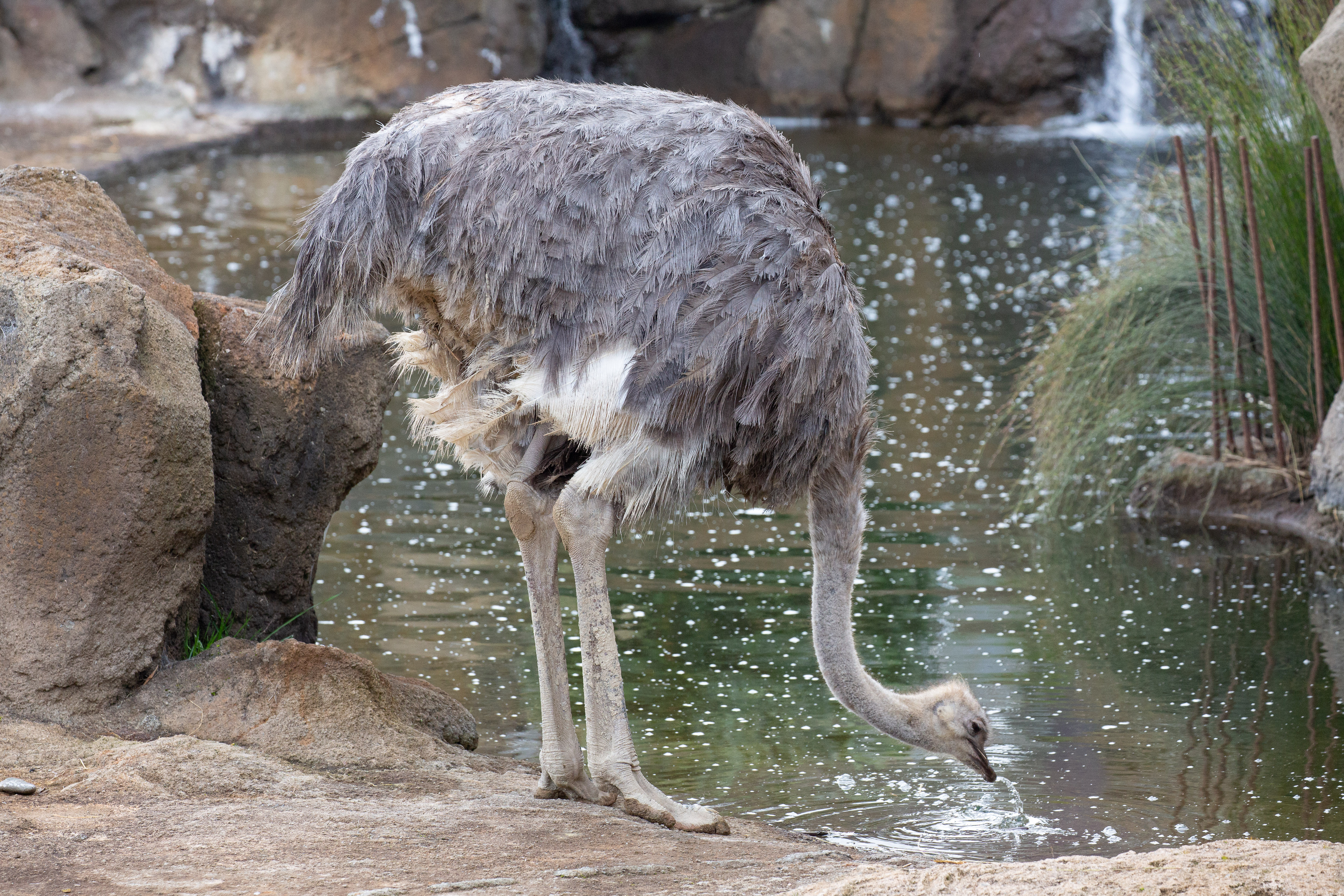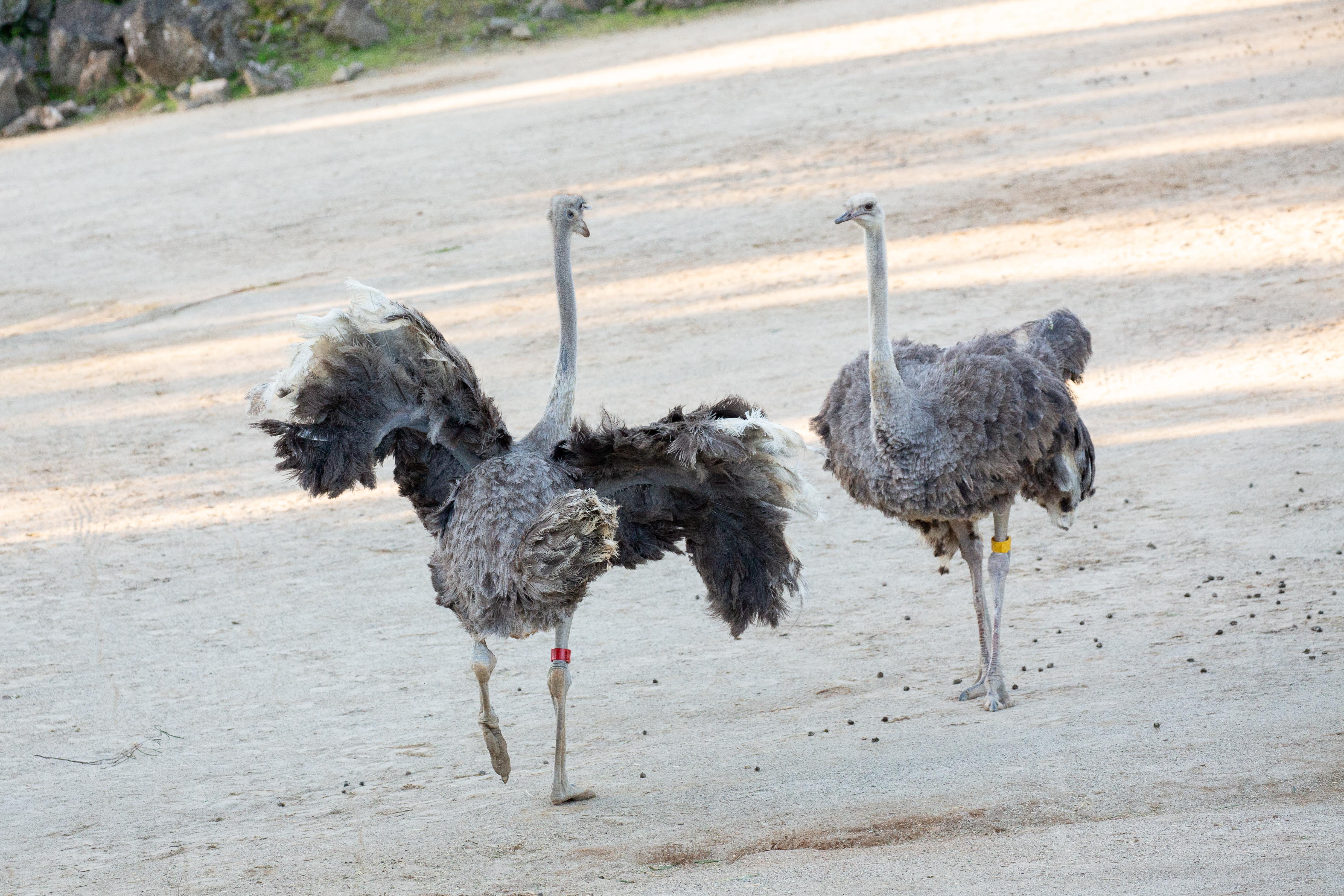Get your head out of the sand
It’s fairly easy to spot the difference between male and female ostriches. Male ostriches are black with white feathers on the tips of their wings and tail, while females are grey-brown. But why is that? It is thought that the difference in colour helps provide good camouflage while they are sitting on a nest. Males will predominately sit on the nest at night and the females during the day.
Ostriches lay their eggs in a mutual nesting system. A male ostrich will prepare several nests within his territory. A dominant female will choose a preferred nest to lay her eggs. Other females will also lay eggs in the same nest – sometimes up to 60 eggs can be in the same nest. The nest is left unattended for up to 2 weeks, which can be a huge risk as a pile of large white coloured eggs can be an easy target for predators.

However, it is thought that the lighter coloured eggs help with temperature control while they are exposed to the elements. After the initial 2 weeks, the dominant female and male will sit on the nest to incubate the eggs. During this time, many of the eggs may be ejected from the nest. It is unknown if the female can recognise her own eggs and rejects others or if it is completely random. Eggs are ejected from the nest as an ostrich can only incubate around 20 eggs at once. It is also thought that some of the eggs are ejected as a predator mitigation technique – sacrificing some eggs outside the nest as easy targets, can help protect the main nest.
Ostriches don’t actually bury their heads in the sand like rumoured. But if predators are near a nest site where an ostrich is sitting, the ostrich will attempt to hide by lying low to the ground and stretching its long neck along the ground. The ostrich uses its feather colouration to camouflage into its surroundings. From a distance they may just look like a rock!

At the Zoo
Where’s the flock?
Our flock of ostriches share their African savannah with giraffe and zebra herds. The habitat is an arid sandy substrate. This sand enables the ostrich to dust bath to maintain feather conditions and cool down on hot days.
The habitat also has a watering hole. On hot days, you may see some of the ostrich getting in the watering hole to cool off. Keepers also often offer the flock ‘shower time’ on hot summer days, by setting up a hose sprinkler or personally hosing the ostriches down. This helps to keep the ostrich nice and cool.

Feeding the flock
In the wild, ostriches are opportunistic omnivores, mainly eating leaves, roots, seeds, and grass, but will also eat insects, rodents, and small lizards if they can catch them. At Auckland Zoo, keepers feed them a range of food to help keep a nutritionally balanced diet. This includes special pellets, maize, shell grit and browse – coprosma is one of their favourites.

Ostrich don’t have teeth, so they swallow small rocks, pebbles and sand particles, which collect in their gizzard, to help break down and digest their food.
Time to train
Ostrich are a prey species which means they are extremely good at hiding any underlying conditions they may have. In the wild, signs of weakness will mean you are targeted by predators. To ensure our ostrich are not hiding any issues, the keepers and vet team do regular health checks. This includes, weight check, taking blood samples and general health checks.
To make the process as stress-free as possible for the ostrich, keepers do training with the ostrich. Training includes getting the ostrich used to taking blood samples while standing, preventing the need to use more invasive procedures. Keepers are also doing target and recall training with the ostrich. This enables keepers to get the ostrich to come to a certain area if there are any dangers or stand on the weigh scales comfortably.
How we’re helping
On February 2, 2020 Auckland Zoo helped celebrate the first-ever World Ostrich Day with social media posts and extra keeper talks.
The day puts this incredible species in the spotlight and encourages people to share photos, facts and stories about the world’s largest bird! World Ostrich Day was set up by our very own keeper and ostrich coordinator, Jade Tinker.
Why are we doing it?
By sharing cool ostrich facts, getting behind conservation campaigns and celebrating wildlife we can help to encourage others to get excited about conservation and share our love for wild animals in wild places and ultimately build a future for wildlife.





